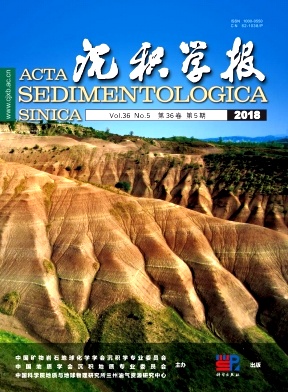Anatomy of Architecture Characteristics in Lacustrine Sand Banks and Its Geological Implications: A case study of modern sand banks in Xiashan Lake
doi: 10.14027/j.issn.1000-0550.2018.067
- Received Date: 2017-08-07
- Rev Recd Date: 2017-10-23
- Publish Date: 2018-10-10
-
Key words:
- sand bank /
- inner architecture /
- Xiashan Lake /
- modern sediment /
- architecture analysis
Abstract: The lacustrine near-shore sand bank is one type of good reservoirs, being the key target for oil and gas exploration and development recently. However, lacking clearly understanding of the inner architecture in this type of reservoir significantly restricts the further reservoir development. In southeastern Xiashan Lake, located in the center of Shandong Province, there are a series of modern sand banks observed parallelly to the lake shoreline. By using shallow wells, pits and other methods, a comprehensive research has been conducted to analyze the inner architecture of sand banks. The result shows that a sand bank has a general coarsening upward structure and is made up of one or more accretions. Between two accretions a thin layer of mud deposition can be found. There are two kinds of accretion stack patterns in a single sand bank which are one overlay pattern and one top-set pattern. The former pattern can usually be well persevered and presents a gradually expanding accretion from bottom to top due to strong aggradation. The latter pattern is easily destructed by flush erosion of wave actions and presents a gradually reducing accretion from bottom to top due to weak aggradation. The distribution of mud layer between two accretions is also determined by accretion stack patterns. The mud layer within an overlay pattern displays a continuous draping shape inclining to the lake center, while the mud layers, within a top-set pattern are isolated and discrete which are parallel to the interface of two accretions. A clear understanding of inner architecture in modern sand banks not only provides a real prototype model for better understanding in accretion stack patterns and spatial distribution of sand bodies in sand banks, but also offers quantitative constraints for 3D sand bank geological modeling.
| Citation: | SHANG XiaoFei, GUO Ying, HOU JiaGen, DUAN TaiZhong, ZHAO Lei. Anatomy of Architecture Characteristics in Lacustrine Sand Banks and Its Geological Implications: A case study of modern sand banks in Xiashan Lake[J]. Acta Sedimentologica Sinica, 2018, 36(5): 877-889. doi: 10.14027/j.issn.1000-0550.2018.067 |






 DownLoad:
DownLoad: